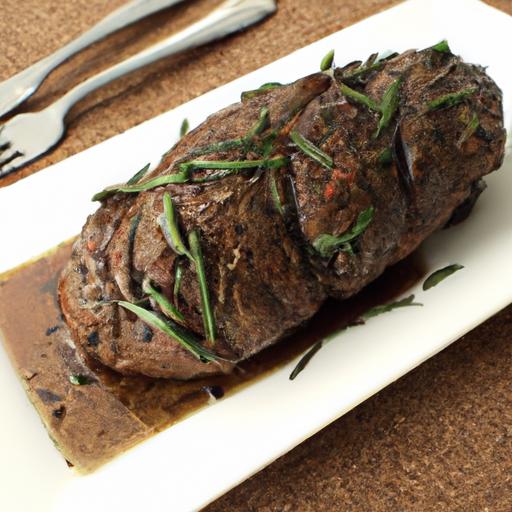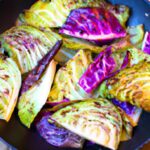In the world of culinary triumphs, few challenges rival the art of roasting thick cuts of meat to juicy, tender perfection. Whether it’s a hefty prime rib, a robust pork shoulder, or a dense leg of lamb, mastering thick meat demands more than just heat and time-it calls for precision, patience, and a touch of know-how. Uneven cooking, toughness, and drying out are common pitfalls that can turn a promising roast into a disappointment. But fear not: behind every flawlessly browned crust and succulent interior lies a set of secrets waiting to be uncovered. Join us as we dive into the science and techniques that transform imposing slabs of meat into succulent, evenly roasted masterpieces. Prepare to elevate your roasting game and impress at every feast with thick meat cooked exactly right.
Mastering Thick Meat: Secrets to Even Roasting Perfection
Mastering thick meat roasting means unlocking the secret to a perfectly cooked, juicy, and flavorful centerpiece that turns any meal into an unforgettable experience. From the rustic heritage of traditional Sunday roasts to modern culinary artistry, thick cuts embody a primal satisfaction that every cook aspires to achieve. The journey to perfect roasting begins with understanding the science that transforms a hefty slab of meat into tender bliss.
Prep and Cook Time
- Preparation: 20 minutes
- Cooking: 1.5 to 2 hours (depending on meat thickness and oven temperature)
- Resting: 20 minutes
Yield
Serves 6 to 8 hearty portions
Difficulty Level
Medium – Requires attention to temperature control and resting times but well within reach for confident home chefs
Ingredients
- 4 lb (1.8 kg) thick-cut beef ribeye roast, trimmed of excess fat
- 2 tbsp kosher salt
- 1 tbsp freshly cracked black pepper
- 3 cloves garlic, thinly sliced
- 2 tbsp olive oil
- 2 sprigs fresh rosemary
- 2 sprigs fresh thyme
- 1 cup beef stock, for basting
- Optional: 1 tbsp Dijon mustard, for finishing
Instructions
- Bring meat to room temperature: Remove the thick cut from the fridge and let it rest on a wire rack for at least 1 hour before roasting. This ensures even heat penetration throughout, avoiding undercooked centers.
- Score and season: Pat the beef dry with paper towels. Using a sharp knife, score a diamond pattern on the fat cap to render more evenly. Rub olive oil, salt, pepper, and scatter garlic slices into the cuts. This promotes deep flavor infusion and a crispy crust.
- Preheat the oven and prepare your pan: Heat your oven to 275°F (135°C) for low-and-slow roasting, essential to mastering thick meat and yielding tender results. Place the roast on a roasting rack inside a shallow pan to enable air circulation.
- Insert aromatics: Tuck the rosemary and thyme sprigs around the roast to infuse herbaceous notes during cooking.
- Initial sear (optional but recommended): For an enhanced Maillard crust, sear the roast in a hot cast-iron skillet with olive oil on all sides for 2-3 minutes before transferring to the oven. This step heightens the caramelized flavor complexity.
- Roast gently: Place roast in the oven. Use a meat thermometer inserted into the thickest part to monitor the internal temperature. For medium-rare perfection, pull at 125°F (52°C) as residual heat will carry it to about 130-135°F.
- Baste regularly: Every 30 minutes, spoon 1-2 tbsp of beef stock over the roast to maintain moisture and amplify savory depth.
- Rest the roast: Once out of the oven, tent loosely with foil and let rest for 20 minutes. Resting allows juices to redistribute, ensuring every slice retains tender juice and achieves ideal texture.
- Carve with confidence: Using a sharp chef’s knife, slice against the grain in ¼-inch thick cuts. Thin, clean slices preserve juiciness and present a visually appealing cross section highlighting the tender crumb and rosy interior.
Tips for Success: Achieving Even Heat and Maximum Flavor
- Selecting your cut matters: Opt for marbled pieces like ribeye or sirloin that have intrinsic fat which bastes the meat internally during roasting.
- Consistent thickness is key: Thicker cuts (2-3 inches) roast more evenly and respond beautifully to this slow cooking method.
- Avoid rushing the roast: Slow, low oven temperatures foster a gradual heat penetration that prevents dry edges and undercooked centers.
- Invest in a quality meat thermometer: Precision is vital; tough, overcooked outer layers become a thing of the past with simple temperature checks.
- Resting times aren’t optional: Skipping or shortening this phase results in juice loss and a dry eating experience.
- Customize flavors: Infuse your rub with smoked paprika, mustard powder, or dried herbs based on preference for a twist on classic profiles.
- Make it ahead: Cook the roast a few hours early, and reheat gently in a low oven while covered to preserve moisture.
Serving Suggestions
Present this beautifully roasted thick meat alongside creamy mashed potatoes and roasted root vegetables. Garnish with fresh thyme sprigs and a drizzle of pan jus or your favorite robust gravy. For a touch of vibrancy, accompany with a tangy chimichurri or horseradish cream. Serve with deep red wines such as Cabernet Sauvignon or Malbec, which complement the rich meat flavors superbly.
| Nutrient | Per Serving (approx.) |
|---|---|
| Calories | 520 kcal |
| Protein | 45 g |
| Carbohydrates | 2 g |
| Fat | 38 g |
Learn more about the science of roasting at Serious Eats and explore our related roasting guide for additional expert tips and variations.

Q&A
Q&A: Mastering Thick Meat – Secrets to Even Roasting Perfection
Q1: Why is roasting thick meat evenly such a challenge?
A1: Thick cuts are like culinary mountains-while the surface browns beautifully, the interior often lags behind, leading to uneven doneness. The dense center takes longer to heat through, and without proper technique, you risk burning the outside while undercooking the core.
Q2: What’s the first secret to conquering thick meat?
A2: Patience is your best spice! Starting with a low and slow oven temperature allows heat to penetrate gently and uniformly. This gentle roasting gives the meat time to cook through without drying out or overbrowning the exterior.
Q3: How does seasoning play into roasting thick meat perfectly?
A3: Seasoning isn’t just flavor-it’s an invitation to a beautiful crust. Generous salting hours before roasting allows the salt to penetrate deep, seasoning the core and helping retain moisture. Herbs, spices, and marinades can enhance this effect, creating layers of taste that develop gradually.
Q4: Is pre-searing thick meat necessary?
A4: Absolutely! A quick sear caramelizes the exterior, locking in juices and adding a delightful crust that contrasts the tender inside. This step jumpstarts the Maillard reaction, laying the foundation for roasted perfection.
Q5: What role does resting the meat play?
A5: Resting is the secret handshake between heat and juices. After roasting, letting the meat rest for 10-20 minutes redistributes the internal juices, preventing a dry finish and ensuring every bite is succulent and tender.
Q6: Can using a thermometer really make a difference?
A6: Yes! A reliable meat thermometer is your roasting compass. It takes the guesswork out of doneness, ensuring you hit the target temperature for safety and juiciness, whether you’re aiming for rare, medium, or well-done.
Q7: Are there any special roasting techniques for thick cuts?
A7: Try the reverse-sear method-slow roast the meat until just shy of your target temperature, then finish with a high-heat sear for a perfect crust. You can also tent the meat with foil during resting to maintain warmth without trapping steam.
Q8: How can I avoid drying out thick meat?
A8: Beyond low and slow cooking, consider brining or using a marinade for added moisture. Basting periodically during roasting or cooking over a water bath (in some recipes) can also preserve juiciness.
Q9: What’s a good thickness for roasting?
A9: Thick cuts typically start at around 2 inches or more. At this scale, even heat penetration becomes critical-and that’s where mastering timing, temperature, and technique pays off.
Q10: Any final wisdom for aspiring thick meat maestros?
A10: Embrace the art of patience, respect the cut you’re working with, and trust your tools. Thick meat roasting isn’t just cooking-it’s a symphony of heat, time, and flavor waiting to be mastered. Happy roasting!
In Conclusion
Mastering the art of roasting thick cuts of meat is more than a culinary task-it’s a journey into the heart of flavor and texture, where patience and precision meet. By understanding the secrets to even heat distribution, recognizing the importance of resting, and embracing techniques like reverse searing or slow roasting, you transform a hefty hunk of protein into a centerpiece of perfection. Whether you’re aiming for a tender brisket, a juicy prime rib, or a robust pork shoulder, these insights empower you to conquer thickness with confidence. So next time you approach the grill or oven, remember: thick meat isn’t a challenge, but an invitation-to elevate your cooking from ordinary to extraordinary. Happy roasting!


